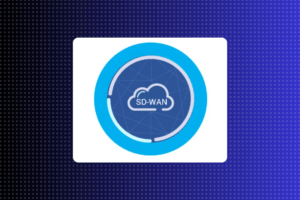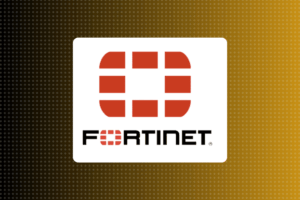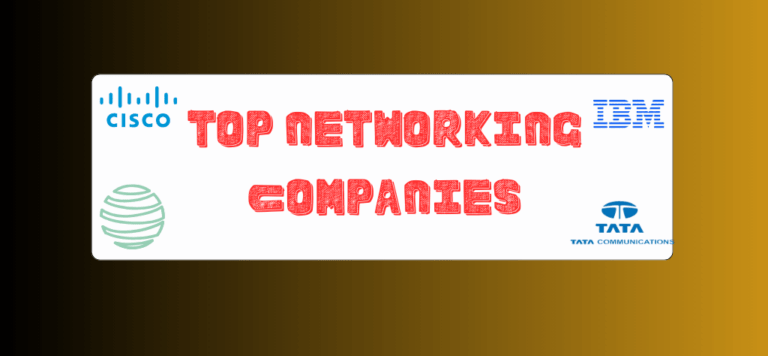Introduction
In the dynamic realm of cybersecurity, ethical hacking plays a pivotal role in safeguarding digital landscapes. As organizations strive to fortify their defenses against malicious cyber activities, certified ethical hackers are in high demand. One crucial aspect of stepping into the realm of ethical hacking is successfully navigating the interview process. Let’s delve into the world of ethical hacking interview questions, offering insights, tips, and real-world examples to guide aspiring candidates.
Understanding Ethical Hacking
Ethical hacking involves authorized individuals probing systems, networks, and applications for security vulnerabilities. The primary purpose is to identify and rectify potential threats before malicious hackers exploit them. In the broader context of cybersecurity, ethical hackers act as the first line of defense, ensuring the integrity and confidentiality of digital assets.
Becoming a Certified Ethical Hacker (CEH)
Achieving the Certified Ethical Hacker (CEH) certification is a significant milestone for those entering the field. This globally recognized certification validates the skills and knowledge necessary to excel in ethical hacking. Understanding the interview process for CEH positions is crucial for prospective candidates.
Preparing for the Interview
Success in an ethical hacking interview requires a combination of theoretical knowledge and practical skills. Aspirants should delve into study materials, leverage online resources, and gain hands-on experience through simulated environments. The ability to apply theoretical knowledge in real-world scenarios is a key focus during the interview process.
150+ Top Ethical Hacking Interview Questions/Ethical hacker interview questions
-
What is ethical hacking?
-
Explain the difference between ethical hacking and malicious hacking.
-
Define penetration testing.
-
What is the purpose of a vulnerability assessment?
-
How do you stay updated on the latest security vulnerabilities and threats?
-
Can you explain the concept of footprinting in ethical hacking?
-
What is network scanning, and why is it important in ethical hacking?
-
Describe the difference between active and passive reconnaissance.
-
What is the significance of banner grabbing in ethical hacking?
-
Explain the term “social engineering” in the context of ethical hacking.
-
What is the importance of a risk assessment in ethical hacking?
-
Define the term “zero-day vulnerability.”
-
How do you approach a penetration testing engagement?
-
Explain the concept of privilege escalation.
-
What is the role of a firewall in network security?
-
Describe the purpose of intrusion detection systems (IDS) in ethical hacking.
-
What is the difference between black box and white box testing?
-
Explain the importance of cryptography in network security.
-
Define the term “SQL injection” and how it can be prevented.
-
What is cross-site scripting (XSS), and how can it be mitigated?
-
Explain the concept of session hijacking.
-
Describe the steps involved in a typical buffer overflow attack.
-
What is a honeypot, and how is it used in ethical hacking?
-
How do you perform a wireless security assessment?
-
What is the role of encryption in securing data?
-
Explain the concept of man-in-the-middle (MitM) attacks.
-
How do you approach web application security testing?
-
Define the term “social engineering toolkit” (SET).
-
Explain the significance of log analysis in ethical hacking.
-
What is the purpose of a proxy server in ethical hacking?
-
Describe the steps involved in a typical phishing attack.
-
How do you perform a DNS enumeration in ethical hacking?
-
What is the importance of secure coding practices?
-
Explain the concept of a distributed denial-of-service (DDoS) attack.
-
How can you secure a wireless network?
-
What is the role of a virtual private network (VPN) in network security?
-
Describe the steps involved in a typical malware analysis.
-
How do you perform a network packet analysis?
-
Explain the concept of a rainbow table in password cracking.
-
What is the significance of a security policy in an organization?
-
How can you prevent data exfiltration in a network?
-
Define the term “firewalking” in the context of ethical hacking.
-
What is a security token, and how is it used in authentication?
-
How do you perform a security audit?
-
Explain the importance of two-factor authentication (2FA).
-
Define the term “honey token” and its use in detecting intrusions.
-
How do you secure a web server against common vulnerabilities?
-
What is the role of biometric authentication in security?
-
Explain the concept of a reverse proxy in ethical hacking.
-
How do you approach incident response in the case of a security breach?
-
Define the term “fuzz testing” and its significance in security testing.
-
What is the importance of patch management in network security?
-
How can you prevent DNS spoofing attacks?
-
Describe the steps involved in a typical brute force attack.
-
What is the significance of a security awareness training program?
-
Explain the concept of a VPN tunnel and its role in secure communication.
-
How do you conduct a social engineering risk assessment?
-
Define the term “honeynet” and its use in detecting attacks.
-
What is the role of a security information and event management (SIEM) system?
-
How do you perform a vulnerability analysis on a network?
-
Explain the concept of a security baseline.
-
What is the importance of a security incident response plan?
-
Define the term “packet sniffing” and its implications for security.
-
How can you secure a mobile device against common threats?
-
Describe the steps involved in a typical privilege escalation attack.
-
What is the role of encryption in securing email communication?
-
Explain the concept of a threat model in ethical hacking.
-
How do you approach a security assessment of cloud services?
-
Define the term “security through obscurity” and its limitations.
-
What is the importance of secure coding practices in web development?
-
How do you perform a wireless security assessment on an IoT device?
-
Explain the concept of a security risk assessment.
-
What is the role of a security awareness training program for employees?
-
How can you secure a database against SQL injection attacks?
-
Define the term “ethical hacker” and their responsibilities.
-
How do you approach a security assessment of a mobile application?
-
What is the significance of a security policy in the context of BYOD?
-
Explain the concept of a digital forensics investigation.
-
How do you secure a network against insider threats?
-
What is the role of a security token in multi-factor authentication?
-
Describe the steps involved in a typical malware reverse engineering process.
-
What is the importance of a secure software development life cycle (SDLC)?
-
How can you prevent a man-in-the-middle attack on a wireless network?
-
Explain the concept of a security risk matrix.
-
Define the term “cross-site request forgery” (CSRF) and its prevention.
-
What is the role of a security incident response team (SIRT)?
-
How do you secure a network against a ransomware attack?
-
Describe the steps involved in a typical web application penetration test.
-
What is the significance of a bug bounty program in security?
-
How can you prevent session hijacking in a web application?
-
Define the term “security posture” and its assessment.
-
What is the role of a security awareness program for end-users?
-
Explain the concept of a security information exchange (SIE).
-
How do you approach security testing of a mobile operating system?
-
What is the importance of security in the Internet of Things (IoT) devices?
-
Define the term “threat intelligence” and its use in security operations.
-
How can you prevent clickjacking attacks on a website?
-
Describe the steps involved in a typical network protocol analysis.
-
What is the role of a security operations center (SOC) in an organization?
-
How do you secure a network against phishing attacks?
-
Explain the concept of a digital certificate in network security.
-
What is the significance of a security awareness program for executives?
-
Define the term “sandboxing” and its use in malware analysis.
-
How can you secure a network against insider threats?
-
Describe the steps involved in a typical social engineering attack.
-
What is the role of a security policy in the context of mobile device management?
-
How do you approach security testing of a web application API?
-
Explain the concept of a security risk register.
-
What is the importance of secure coding practices in embedded systems?
-
Define the term “red teaming” and its role in security assessments.
-
How can you prevent DNS cache poisoning attacks?
-
Describe the steps involved in a typical voice over IP (VoIP) security assessment.
-
What is the role of encryption in securing data at rest?
-
Explain the concept of a security control framework.
-
How do you secure a network against distributed denial-of-service (DDoS) attacks?
-
What is the significance of a security awareness program for third-party vendors?
-
Define the term “binary analysis” and its use in vulnerability research.
-
What is the importance of a security incident response playbook?
-
How can you prevent a cross-site scripting (XSS) attack on a web application?
-
Describe the steps involved in a typical container security assessment.
-
What is the role of a security policy in the context of industrial control systems?
-
How do you approach security testing of a cloud infrastructure?
-
Explain the concept of a security risk appetite.
-
What is the significance of a security awareness program for remote workers?
-
Define the term “threat modeling” and its use in security design.
-
How can you prevent a brute force attack on a network?
-
Describe the steps involved in a typical wireless security assessment.
-
What is the role of encryption in securing communication over public Wi-Fi?
-
What is the importance of secure coding practices in mobile app development?
-
Define the term “incident response plan” and its components.
-
How do you secure a network against man-in-the-middle attacks?
-
Explain the concept of a security control matrix.
-
What is the significance of a security awareness program for software developers?
-
How can you prevent a spear-phishing attack on an organization?
-
Describe the steps involved in a typical threat hunting process.
-
What is the role of encryption in securing data in transit?
-
What is the importance of secure coding practices in web services?
-
Define the term “security architecture” and its components.
-
How do you secure a network against ransomware attacks?
-
Explain the concept of a security risk assessment framework.
-
What is the significance of a security awareness program for end-users?
-
How can you prevent a SQL injection attack on a database?
-
Describe the steps involved in a typical physical security assessment.
-
What is the role of encryption in securing data on mobile devices?
-
What is the importance of secure coding practices in IoT devices?
-
Define the term “threat intelligence sharing” and its benefits.
-
How do you secure a network against social engineering attacks?
-
Explain the concept of a security control validation.
-
What is the significance of a security awareness program for IT administrators?
-
How can you prevent a distributed denial-of-service (DDoS) attack on a website?
Key Takeaways for Success
Aspirants should focus on a holistic approach, combining theoretical knowledge with practical skills. Confidence, effective communication, and adaptability are key elements for success in ethical hacking interviews.
Conclusion
In the ever-evolving landscape of cybersecurity, ethical hacking interviews serve as a gateway to exciting and impactful careers. Navigating these interviews requires a blend of technical prowess, soft skills, and a proactive approach to learning. As you embark on this journey, remember that preparation, confidence, and a passion for cybersecurity will set you apart.









